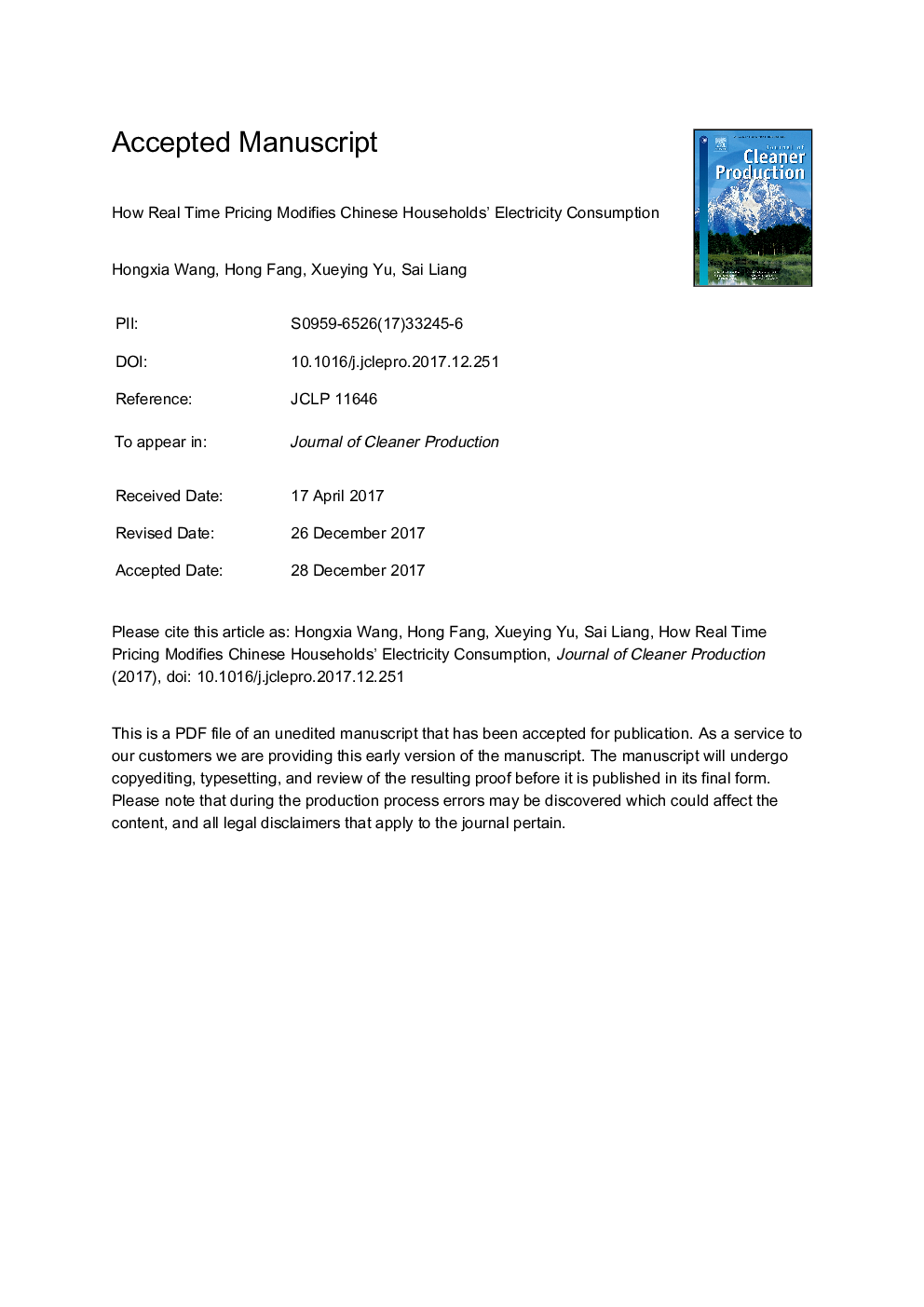| Article ID | Journal | Published Year | Pages | File Type |
|---|---|---|---|---|
| 8098536 | Journal of Cleaner Production | 2018 | 37 Pages |
Abstract
Implementing real-time electricity pricing in residential sector is supposed to be an effective measure to balance daily electricity load and promote electricity conservation. However, due to lack of empirical evaluation, evidence about the in-field impacts of real-time electricity pricing is still lacking in China. Based on household survey and agent-based modeling, this study simulates Chinese household's 24-h electricity demand profile, and analyzes how households adjust their electricity use activities under the dynamic real-time pricing scheme. Results show that real-time pricing has the potential to shift residential electricity load from peak to off-peak periods and reduce total electricity consumption. The magnitudes of these two effects hinge on the probability of households' response to electricity price increases. Survey results indicate that such probability varies along the two dimensions of households' characteristics and the type of electricity use activities. To raise the response rates and improve real-time pricing's effects, the following strategies are proposed: 1) introduce and subsidize the purchase of economically feasible domestic electricity storage devices; 2) integrate environmental education modules in the real-time pricing policy design, so as to raise household dwellers' sensitive to the price signals.
Related Topics
Physical Sciences and Engineering
Energy
Renewable Energy, Sustainability and the Environment
Authors
Hongxia Wang, Hong Fang, Xueying Yu, Sai Liang,
